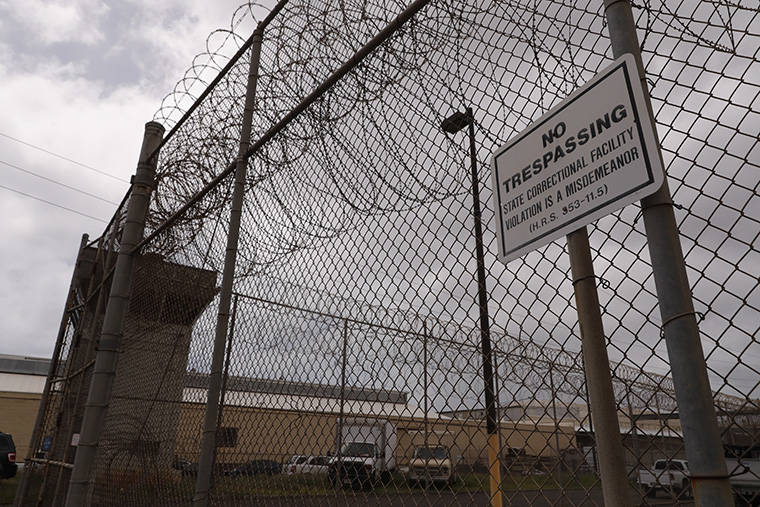Special master defends early release of Hawaii inmates, says recidivism rate low | Honolulu Star-Advertiser

The Oahu Community Correctional Center (OCCC) is seen on March 25.
Special Master Daniel Foley addressed criticisms regarding the release of hundreds of state inmates to reduce the spread of COVID-19 but said continuing to get them out of jails and prisons will be difficult.
Foley submitted his fifth report for the Hawaii Supreme Court on Thursday and reported that the state’s overall inmate population has dropped by over 800 since March 2. Most were early releases that came after the Supreme Court’s order to address inmate overcrowding during the coronavirus outbreak.
One of the criticisms of those early releases is the crime that those inmates committed afterward.
Though it’s still too early to judge, Foley said only 50 of the 650 or so inmates released early were arrested again. That’s an 8% recidivism rate — well below the roughly 50% average rate for inmates released on probation prior to COVID-19.
“Any new offense, arrest, or charge is a serious matter, is harmful and traumatic to the complainant, and should in no way be minimized. However, an 8% recidivism rate does not mean the releases overall were a failure,” he said.
Another criticism was that inmates were being released with nowhere to stay, although Foley said inmates would not have been granted probation without a verified residence.
“The problem in some cases has been verifying these residences,” he said. “However, as ordered by this Court, inmates are not to be released if they are a threat to public safety, even if they have a verified residence.”
Foley said in his report that it will be difficult to reduce the state’s inmate population in the future.
The Hawaii Paroling Authority is still reviewing cases for nearly 500 sentenced felons, but all 1,088 cases for inmates awaiting trial or are on probation with jail time already have been decided.
State Attorney General Clare Connors and three county prosecutors have said the early releases should stop now. They believe the state has addressed the threat of COVID-19 among inmates, none of whom have tested positive for the virus.
The Office of the Public Defender, which in March filed the motion to the Supreme Court asking for the early releases, believes that correctional centers and facilities are still overcrowded.
Continued Hawaii Supreme Court oversight would help maintain lower inmate populations during the outbreak, state Public Defender James Tabe said, but Foley said the Supreme Court might have to address when it should step away.